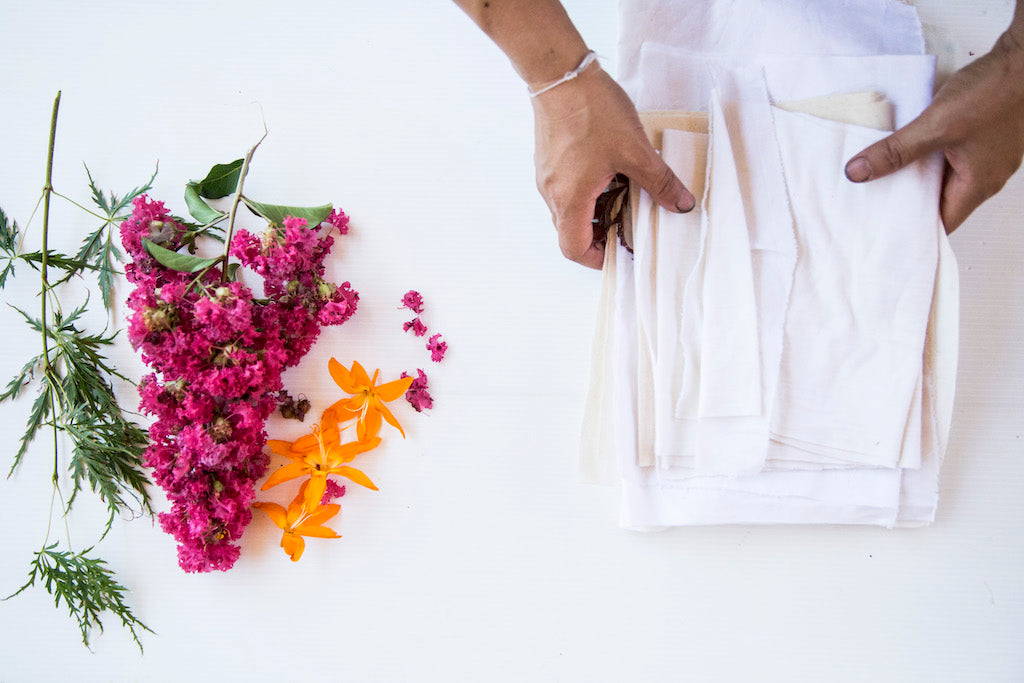Flower and leaf pounding technique

Hey everyone,
It has been a long time in between sharing anything here. I have been asked many times how to create this effect on textiles. This tutorial was first written for Peppermint magazine in 2018.
All photos by Canberra based photographer Lorna Sim
Have a go and let me know what you think.
Flower/Leaf pounding technique
I use this technique when there are flowers and petals in the garden that are so pretty but there is not enough of them to be able to extract a colour. So the next best thing is to be able to preserve them intact, a print, just as you see them. Sometimes the result is even better than the flower because there may be some patterns and colours hidden that the naked eye is unable to see. There can also be another element of surprise where after pounding, a completely different colour appears.
This technique is also a fun introduction for children to learn and appreciate the art of Natural Dyes where the results are instant.
You can choose any flower or leaf that is in your garden or neighbourhood. Since there are so many flowers and plants that I have not used and that are available to you right now but not me, it is best to do a small sample or test what works best. I have found that all yellow flowers eventually fade and most dark flowers work best for this technique.
Materials needed
For this method, a thick cotton or linen fabrics works best. If you want to mordant fabric, checkout Rebecca Desnos’s soy milk directions. You can also pre soak your fabric in a bucket of 1/4 vinegar and 3/4 water solution. Leave for 30 minutes before removing and allowing to dry.
- Two pieces of cotton/linen fabric. A good weight silk fabric can also be used.
- Medium size mallet or hammer
- Large wooden board/ cardboard placed underneath fabric. Never place fabric directly on concrete as you will create holes in the cloth.
- Flowers – before starting, tear flower petals with your fingers to check if the colour stains. If not, there will be no colour. Leaves – such as rose leaves, tomato leaves, sage, maple, ferns. There are different plants for different climates – test your local flora to see which ones work best for you.
Instructions
Place the fabric onto the wooden board, and then add the leaves and petals to the fabric.
Cover the piece of fabric with another piece of cotton or fold the fabric in half so that when you pound the leaves it will protect your work. If you fold the fabric in half and use one side, it will create a mirror image of the pattern on the other side of your fabric.
Pound each leaf under the cotton to reveal the print.
Keep going until you have finished with the desired look. You will have print on both fabrics.
Do not pick off the leaves and flowers while they are still wet as this can cause smudging of design and colours.
Leave to dry for at least 24 hours.
Shake to remove dried petals, and then iron to seal the dye and colour.
Step 1

Step two

Step 3

Step 4

Step 5

Step 6

Step 7

Step 8

Step 9 - the reveal!

